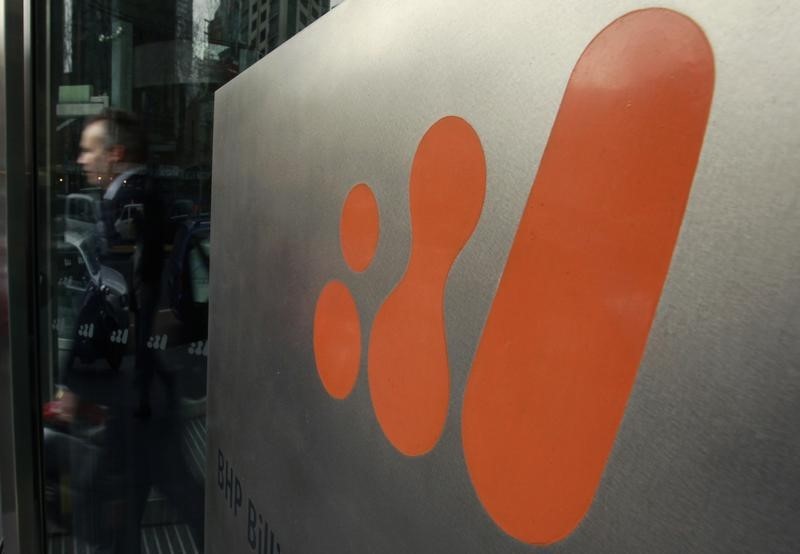(The opinions expressed here are those of the author, a columnist for Reuters.)
By Clyde Russell
LAUNCESTON, Australia, March 30 (Reuters) - Janet Yellen has emerged as another problem for commodity producers, particularly those in Australia, as her caution over interest rates has effectively weakened the U.S. dollar.
The Federal Reserve chair said on Tuesday that the U.S. central bank should "proceed cautiously in adjusting policy" given the risks to the economic outlook. signals that U.S. interest rates may not rise as quickly as many in financial markets had expected, resulting in the U.S dollar losing ground.
The Australian dollar AUD= gained almost 2 percent from its low on Tuesday to its high so far on Wednesday of 76.48 U.S. cents, and it is up 5.3 percent so far this year.
The gain so far in 2016 stands in sharp contrast to the Australian currency's 37.6-percent drop between its post-2008 recession high of about $1.10 in July 2011 to the low below 69 cents, reached in January this year.
This currency has been on a rising trend since the January trough, and this is bad news for Australian commodity producers, who have been relying on a weaker currency to help them drive cost efficiencies in their bid to survive low prices.
Take iron ore for example, with major producers Rio Tinto (LON:RIO) RIO.AX and BHP Billiton (LON:BLT) BHP.AX now able to mine a tonne of iron ore and get it to an export port in Western Australia state for a figure of $15 a tonne or less.
This is roughly a third of what it cost to do the same thing a mere three years ago, underscoring the success of the miners' cost-cutting programmes.
While there is little doubt that improved working practices, more efficient machinery and squeezing labour costs have played a major part in the cost cuts, it's also true that the weaker commodity currencies, coupled with low oil prices, have contributed significantly.
This can be seen in Rio Tinto's annual presentation, released last month, which showed that a 10 percent variance in the value of the Australian dollar will have a $651 million impact on underlying earnings.
The Australian dollar is already slightly more than half way to a gain of 10 percent so far this year.
Rio Tinto also said that a 10 percent variance in the price of crude oil would have a $65 million impact on underlying earnings.
While this is considerably less than the effect of a similar move in the Australian dollar, it does show that costs at mines are vulnerable to any increase in the price of fuel, given their reliance on diesel for equipment and transportation.
COSTS MAY RISE
If the Australian dollar keeps rising against the greenback, and if crude oil prices do rise as increasingly expected by money managers, then it's going to get tougher for miners to keep delivering cost cuts.
They may even start to see costs rising again, and this would be problematic unless matched by similar gains in the U.S. dollar prices of the commodities they produce.
Asian spot iron ore .IO62-CNI=SI , the main profit-driver for Rio Tinto and BHP Billiton, has gained 27.5 percent in U.S. dollar terms this year, but only 21.6 percent in Australian dollars.
This will be putting some pressure on margins at mines in Australia, which pay costs in the local currency by earning revenue in U.S. dollars.
There are also relative costs at work here in the cutthroat market that seaborne iron ore has become.
South Africa's Kumba Iron Ore KIOJ.J may be better placed from a cost perspective than its Australian competitors, given iron ore prices are up 25.1 percent so far this year in rand ZAR= terms, given the rand has underperformed the Australian dollar relative to the greenback.
In coal, Australian producers have seen a 1.2-percent decline in Australian dollar terms, even though the Newcastle weekly index GCLNWCWIDX is up 3.7 percent in U.S. dollars.
The price of coal in rand is up 3.6 percent and its virtually steady in Indonesian rupiah IDR= , being down just 0.3 percent.
This means that a small advantage is accruing to South African and Indonesian coal exporters, relative to their Australian counterparts.
It may not seem like much, but in the current environment of low commodity prices, even a few cents a tonne can make the difference between keeping one's head above water and going under. (Editing by Joseph Radford)
